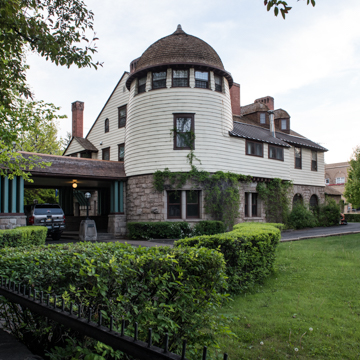You are here
Hood Mortuary (Amy House)
Ernest Amy, manager of the San Juan Smelter, hired New York architects and spent $50,000 to build Durango's finest home, hoping to lure his wife west from New York City. Durango newspapers compared it to “a New York City Mansion” and cited it as proof “that Durango is no mushroom city.” Durango's first all-electric house, it had 25-watt light fixtures in every room. Notwithstanding heroic architectural efforts, Amy's wife did not like Durango and persuaded him to go back to New York after the crash of 1893.
A sophisticated specimen that would be at
Writing Credits
If SAH Archipedia has been useful to you, please consider supporting it.
SAH Archipedia tells the story of the United States through its buildings, landscapes, and cities. This freely available resource empowers the public with authoritative knowledge that deepens their understanding and appreciation of the built environment. But the Society of Architectural Historians, which created SAH Archipedia with University of Virginia Press, needs your support to maintain the high-caliber research, writing, photography, cartography, editing, design, and programming that make SAH Archipedia a trusted online resource available to all who value the history of place, heritage tourism, and learning.

